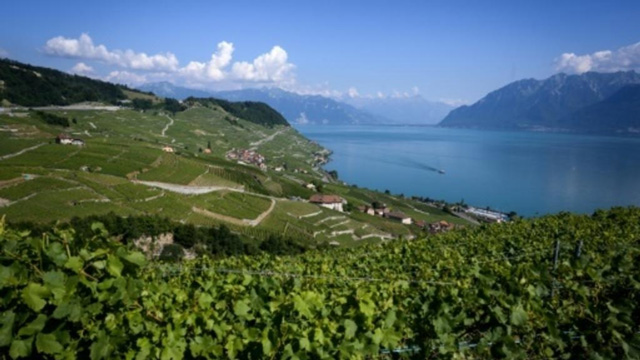
Rivaz, Switzerland | AFP | When foreigners think of Swiss specialities that might excite their taste buds, world-renowned chocolate and cheese likely come to mind.
Swiss wine? Not so much.
But the global reputation of Switzerland’s winemakers may be set for a boost, backed by a new export promotion strategy that aims to see Swiss labels on menus at the world’s top restaurants.
In some ways, the Swiss Winegrowers’ Festival (Fete des Vignerons), which opened Thursday, mirrors the country’s appellations: both could be considered extraordinary, yet both are hardly known outside Switzerland.
The festival, hosted in the country’s winemaking Lavaux region, is recognised on UNESCO’s list of intangible cultural heritage.
First held in 1797, the festival has taken place roughly every quarter century since.
The main event, expected to draw 20,000 per night through August 11, is a theatrical performance dramatising a year in the life of a vineyard, from pruning to harvest.
Ahead of this year’s edition, industry experts agreed that the time had come for Swiss wine to spread its vines.
– Unique grapes –
Damien Leclerc, sales director at Lavinia, a prominent wine shop in central Geneva, agreed that Swiss labels were “little known to the general (international) public.”
But the French national told AFP that “insiders (and) professionals” appreciate that, despite the small output, Switzerland produces unique grapes and wines of extremely high quality.
“We have excellent grape varieties that really only exist here,” Leclerc said, citing, among other examples, the Completer, a grape from the eastern canton of Graubuenden used to produce rich, full-bodied white wines.
Leclerc, also a sommelier, argued that for Swiss wine to thrive abroad it needed to emphasise “exclusivity”, especially because it cannot compete with the production scale of its neighbouring wine behemoths, France and Italy.
In 2018, the total area in Switzerland devoted to wine production amounted to less than 15,000 hectares (37,000 acres), compared to nearly 800,000 hectares in France.
– One percent exported –
Many of Switzerland’s top vineyards are in Lavaux — also a UNESCO World Heritage Site — and rest on stunning terraced hillsides between Lausanne and Montreux, overlooking the banks of Lake Geneva, with the Alps in view across the water.
Monica Tomba, manager at the Lavaux Vinorama visitors centre, said that after absorbing the breathtaking views and sampling the local offerings, foreign tourists — especially from Asia — voice regret that they cannot buy Swiss wines after returning to their home countries.
In fact, only one percent of wine produced in Switzerland is exported, according to the Swiss Observatory for the Wine Market (OSMV), a market research group.
Swiss winemakers have historically been reluctant to export in part to avoid price wars with producers from other countries that churn out bottles on far larger scales.
Because many Swiss vineyards are on sloping terrain, much of the labour needs to be done by hand, an added expense in a country with already high labour costs.
Local winemakers — including small, family-run businesses — believed that competing internationally would require them to lower their prices, which is not economically viable, Tomba told AFP.
– ‘Flagship’ brands –
But a new export strategy spearheaded by Swiss Wine Promotion (SWP), an industry lobby group, sees domestic winemakers disregarding the low end of the market and emphasising premium products for consumption abroad.
“We are no longer going to try to sell a Fendant… or a cheap wine,” said SWP president Jean-Marc Amez-Droz, referring to a Chasselas that is one of Switzerland’s best-known brands.
Instead, SWP wants to focus on “niche products,” he told AFP.
Amez-Droz noted that Swiss exporters have recently had more success promoting bottles at prices above 30 Swiss francs ($30, 27 euros), while five-franc bottles are dismissed as “too expensive” for their quality.
Michael Ganne, director of the Geneva-based Baghera wine auction house, agreed that the export strategy should aim to create buzz around a dozen “flagship winemakers”.
For now, there are still not many Swiss labels present on the menus of top global restaurants.
But Sandrine Caloz, a 30-year-old already considered one of the country’s top organic wine producers, is among those setting a new trend.
Caloz, whose vineyard is in southern Valais canton, told AFP that she had begun exporting to the United States after being approached by the New York-based Rosenthal Wine Merchant group.
“The fact that bottles of our wine can now be found in expensive restaurants in Manhattan gives us credibility, including in the minds of Swiss clients,” she said.
 The Independent Uganda: You get the Truth we Pay the Price
The Independent Uganda: You get the Truth we Pay the Price



